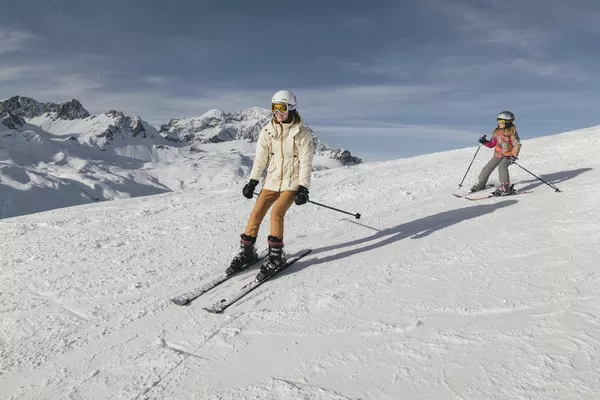In the realm of winter sports, skiing reigns supreme, offering enthusiasts an array of options to traverse snowy landscapes. Two popular variations, backcountry skiing and cross-country skiing, attract adventurers seeking different experiences on the snow-covered terrain. While both involve gliding over snow, these disciplines diverge significantly in technique, terrain, and overall experience. In this article, we delve into the distinctions between backcountry skiing and cross-country skiing, providing insight into their respective appeals and challenges.
Backcountry Skiing: A Journey into Uncharted Territories
Backcountry skiing, often referred to as off-piste skiing, embodies the spirit of exploration and adventure. Unlike traditional resort skiing, backcountry skiing takes participants away from groomed trails and into untamed wilderness. The allure of backcountry skiing lies in its promise of untouched powder, remote vistas, and the thrill of charting one’s course through challenging terrain.
One of the defining features of backcountry skiing is its reliance on climbing skins and specialized equipment, such as alpine touring (AT) or telemark bindings, which allow skiers to ascend slopes efficiently. This aspect sets it apart from other forms of skiing, as backcountry enthusiasts must embrace the dual roles of skier and mountaineer. Ascending through rugged terrain demands physical endurance, navigation skills, and an understanding of avalanche safety protocols.
Backcountry skiing offers a sense of freedom and solitude not often found in crowded resort settings. Skiers have the opportunity to explore remote wilderness areas, forging their paths through pristine snowfields and untouched forests. This communion with nature is a powerful draw for many backcountry enthusiasts, who relish the chance to escape the crowds and noise of civilization.
However, with this freedom comes inherent risks. Backcountry skiers must contend with unpredictable weather conditions, variable snowpack, and the ever-present threat of avalanches. Proper education, training, and equipment are essential for safe backcountry travel, as even experienced skiers can encounter hazards beyond their control.
Despite these challenges, the rewards of backcountry skiing are undeniable. The sense of accomplishment that comes from conquering a challenging ascent, the exhilaration of carving fresh tracks through untouched powder, and the tranquility of being surrounded by pristine wilderness create unforgettable experiences for those willing to venture off the beaten path.
Cross-Country Skiing: A Serene Journey of Endurance
In contrast to the rugged allure of backcountry skiing, cross-country skiing offers a more serene and accessible experience. Also known as Nordic skiing, cross-country skiing emphasizes endurance, technique, and cardiovascular fitness. Participants glide across relatively flat terrain using specialized skis, poles, and boots designed for efficiency and speed.
One of the primary appeals of cross-country skiing is its accessibility. Unlike backcountry skiing, which often requires access to remote wilderness areas, cross-country trails can be found in parks, golf courses, and dedicated Nordic centers throughout the world. This accessibility makes cross-country skiing an ideal option for individuals looking to enjoy winter landscapes without the need for extensive travel or specialized equipment.
Cross-country skiing offers a full-body workout that engages multiple muscle groups and provides an excellent cardiovascular challenge. The rhythmic motion of skiing promotes balance, coordination, and endurance, making it an effective form of winter exercise for individuals of all ages and fitness levels.
Another notable aspect of cross-country skiing is its focus on technique and efficiency. Skiers must master various techniques, including classic and skate skiing, to maximize speed and efficiency on the snow. This emphasis on skill development adds an element of challenge and progression to the sport, as skiers strive to improve their technique and performance over time.
Unlike backcountry skiing, which often prioritizes solitude and exploration, cross-country skiing can be a social activity enjoyed with friends, family, or fellow enthusiasts. Many Nordic centers offer groomed trails of varying difficulty, making cross-country skiing an accessible and enjoyable pastime for groups of all sizes and skill levels.
However, despite its accessibility and relative safety, cross-country skiing is not without its challenges. Skiers must contend with changing weather conditions, variable snow conditions, and the occasional steep incline or descent. Additionally, mastering the various techniques of cross-country skiing requires time, patience, and dedication.
Conclusion
In conclusion, both backcountry skiing and cross-country skiing offer unique experiences and challenges for winter sports enthusiasts. Backcountry skiing appeals to those seeking adventure, exploration, and solitude in remote wilderness areas, while cross-country skiing provides a serene and accessible option for individuals looking to enjoy winter landscapes and improve their fitness. Whether carving fresh tracks through untouched powder or gliding gracefully along groomed trails, skiers of all persuasions can find fulfillment and excitement on the snowy slopes.
FAQs:
1. Is Alpine touring the same thing as cross-country?
Alpine touring and cross-country skiing are distinct disciplines. Alpine touring involves skiing uphill using special bindings that allow the heel to be free for climbing and then locking the heel down for descents, often done in mountainous terrain. In contrast, cross-country skiing, also known as Nordic skiing, primarily involves skiing on relatively flat terrain with skis designed for efficient gliding forward, using a “kick and glide” motion. The techniques, equipment, and terrain for each differ significantly.
2. Is Alpine touring the same thing as cross-country?
Yes, alpine touring and cross-country skiing are distinct activities. Alpine touring typically involves skiing uphill and downhill in mountainous terrain, utilizing specialized equipment. In contrast, cross-country skiing takes place on relatively flat terrain, focusing on forward propulsion with a “kick and glide” technique using lightweight skis.
3. What is it called when you walk with skis?
Walking with skis is referred to as “ski touring” or “ski mountaineering.” It involves hiking or walking with skis attached to boots equipped with special bindings. This activity allows individuals to access backcountry areas in snow-covered terrain, combining elements of hiking and skiing for exploration and adventure.

